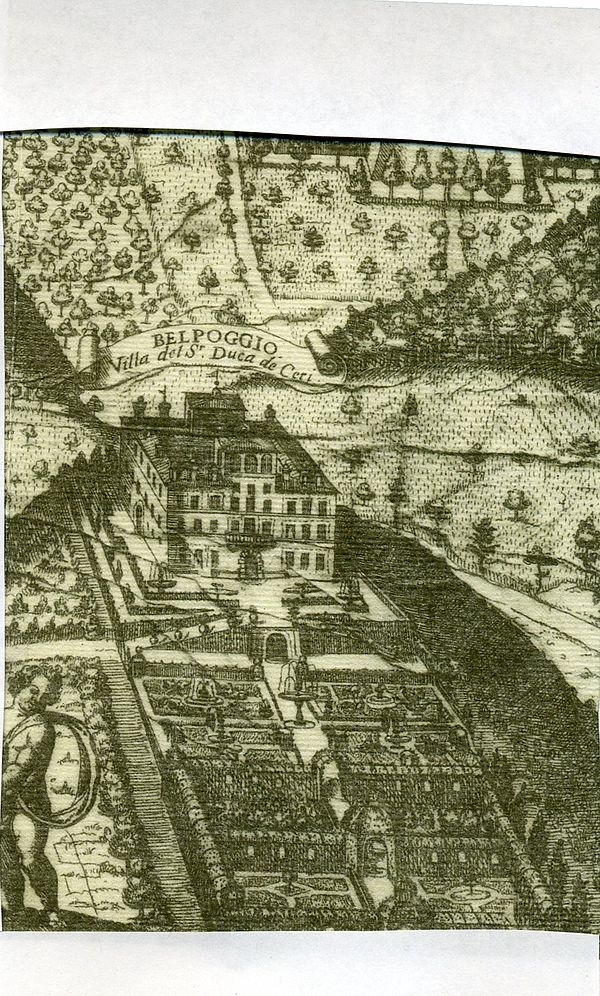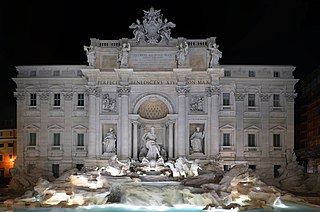The Gardens of Lucullus were the setting for an ancient villa on the Pincian Hill on the edge of Rome; they were laid out by Lucius Licinius Lucullus about 60 BCE. The Villa Borghese gardens still cover 17 acres (6.9 ha) of green on the site, now in the heart of Rome, above the Spanish Steps.

Villa Borghese is a landscape garden in the naturalistic English manner in Rome, containing a number of buildings, museums and attractions. It is the third largest public park in Rome after the ones of the Villa Doria Pamphili and Villa Ada. The gardens were developed for the Villa Borghese Pinciana, built by the architect Flaminio Ponzio, developing sketches by Scipione Borghese, who used it as a villa suburbana, a party villa, at the edge of Rome, and to house his art collection. The gardens as they are now were remade in the early nineteenth century.

Frascati is a city and comune in the Metropolitan City of Rome in the Lazio region of central Italy. It is located 20 kilometres (12 mi) south-east of Rome, on the Alban Hills close to the ancient city of Tusculum. Frascati is closely associated with science, being the location of several international scientific laboratories.

Frescati is a park-like area on the northern outskirts of Stockholm. The name has occasionally been spelled Freskati, e.g. on the name signs at the former Freskati railway station.

Frascati Cathedral is a Roman Catholic cathedral and minor basilica in Frascati, Italy. Dedicated to Saint Peter the Apostle, it is the seat of the Bishop of Frascati.
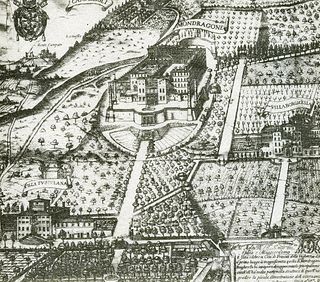
Villa Mondragone is a patrician villa originally in the territory of the Italian comune of Frascati, now in the territory of Monte Porzio Catone. It lies on a hill 416m above sea-level, in an area called, from its many castles and villas, Castelli Romani about 20 km (12 mi) southeast of Rome, near the ancient town of Tusculum.

The Villa Falconieri is a villa in Frascati, Italy.

Villa Vecchia is a patrician villa near Frascati, Italy, in the territory of the commune of Monte Porzio Catone. In the villa's garden there is a long stretch of a well kept Roman road. It was founded in 1560 by the cardinal Giovanni Ricci of Montepulciano. Frascati is known for many such villas, such as the famous Villa Mondragone.
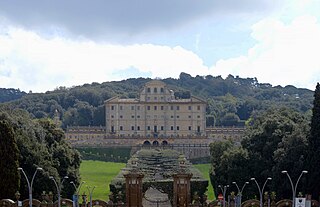
The Villa Aldobrandini is a villa in Frascati, Italy. Still the property of, and still lived in by, the Aldobrandini family, it is known as Belvedere for its charming location overlooking the valley toward the city of Rome.
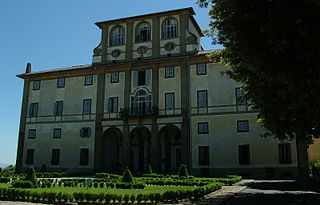
Villa Rufinella, also called Villa Tuscolana, is a villa in Frascati, Italy.

Villa Lancellotti is a villa in Frascati, Italy, the nearest to the town centre. This villa was constructed in 1582 by Cardinal Bonanni. It was sold in 1617 to the banker Roberto Primo who constructed the 'teatro d'acqua' at the far end of the garden. The theatre is a direct copy of that at the nearby Villa Mondragone, for whom Primo acted as a banker. The clock, or 'orologio' was added in the nineteenth century while the villa was in the ownership of the Lancellotti family.
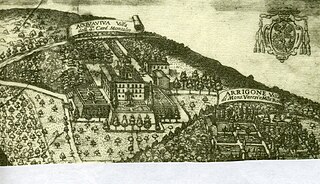
Villa Grazioli is a villa in Frascati, Italy, now in Grottaferrata communal territory.

Villa Sora is a villa in Frascati, Italy. This villa was built at the end of 16th century by Giacomo Boncompagni, duke of Sora, natural son of Pope Gregory XIII. In the central hall there are painted fresco decorations of Cavalier D'Arpino(17th century). Frescoes by Flemish artists are in two lodges, opposite the villa.
Villa Muti is a villa in Frascati, Italy, now in the communal territory of Grottaferrata.

Villa Parisi - Borghese is a villa in Frascati, now in Monte Porzio Catone municipal territory, Italy.

Flaminio Ponzio (1560–1613) was an Italian architect during the late-Renaissance or so-called Mannerist period, serving in Rome as the architect for Pope Paul V.

Villa del Priorato di Malta or Magistral Villa, located on the Aventine Hill in Rome, is one of the two institutional seats of the government of the Sovereign Order of Malta. Along with Magistral Palace, the estate is granted extraterritorial status by Italy. It also hosts the Grand Priory of Rome and the embassy of the Sovereign Order of Malta to Italy.
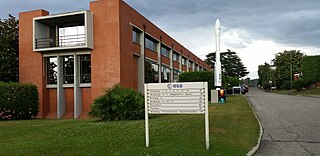
The ESA Centre for Earth Observation is a research centre belonging to the European Space Agency (ESA), located in Frascati, Italy. It is dedicated to research involving earth observation data taken from satellites, among other specialised activities. The establishment currently hosts the European Space Agency's development team for the Vega launcher.
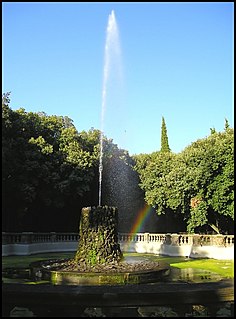
The Villa Torlonia in Frascati is a villa belonging to the Torlonia family in Frascati, Italy.

Villa Sciarra is a park in Rome named for the villa at its centre. It is located between the neighborhoods of Trastevere, Gianicolo and Monteverde Vecchio.

